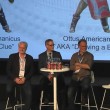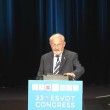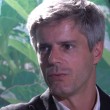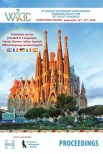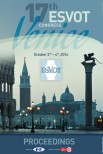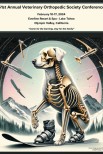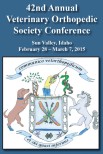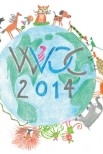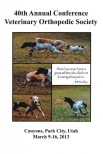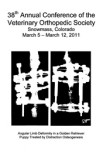Kei Hayashi DVM, PhD, Dipl.ACVS
Employment since graduation - including current positions
University of Tokyo, Post-doctoral fellow
University of Wisconsin, Resident, Small Animal Surgery
Michigan State University, Assistant Professor, Small Animal Orthopaedics
University of California Davis, Assistant/Associate Professor, Surgery
Cornell University, Associate Professor, Small Animal Orthopaedic Surgery
How old were you where you decided that you wanted to be a veterinarian; and what, or who’ gave you that idea?
Since I can remember, I always loved animals and wanted to become a zookeeper. When I was in high school, I wanted to study biology, zoology and ecology in college. During college, I decided to enter a veterinary programme instead of more scientific fields, because I felt that veterinary medicine is more practical and a better fit for me.
You decided to specialise in orthopaedics. Was that because you were led there by an individual or was it in your mind when you were a student?
Both. I enjoy studying arts and playing sports. Also I enjoy using my eyes and hands and naturally enjoyed surgical laboratories during veterinary school. Due to a sports injury, I had orthopaedics surgery and was amazed with skills of the surgical team.
After I became interested in surgery, many mentors influenced me towards specialising in orthopaedics. Drs. Eb Rosin and Tass Dueland brought me into a graduate programme in the U.S., Drs. Mark Markel and Ken Johnson trained me in orthopedic research, and Drs. Paul Manley, Kathy Linn, and Peter Muir taught me wonders of orthopaedic surgery during my residency.
You certainly were fortunate to have such accomplished orthopaedists as your mentors. What research projects have you undertaken.
My PhD training was focused on ligament pathology and wound healing biology, utilizing cell biological and biomechanical methods. My ultimate goal is to identify the complicated pathogenesis of cranical cruciate ligament disease in dogs and to invent novel therapeutic options for this extremely common problem. Because of my background in cell biology and biomechanics, I have been involved in regenerative medicine (stem cell) research in veterinary orthopedics and biomechanical investigation of novel total arthroplasty systems. In addition, I collaborate with human orthopedic surgeons in ACL and sports medicine research, and with engineers in functional orthopedic tissue engineering.
In your opinion what do you see as the least understood problem orthopaedics – not including problems pertaining only to the cellular level.
Dynamic mechanism of elbows and stifles in dogs in motion. We don’t know how coronoid process and cranial cruciate ligament are functioning when dogs are walking, running, jumping, stopping, and changing directions. When I was a young surgeon, Drs. Flo, Braden, DeCamp, Probst, and Dejardin repeatedly emphasized the importance of gait observation and orthopedic examination in orthopedic practice. Despite my background in cell biology, I strongly feel that we need to look at our patients as a whole before we think about cells, molecules, and genes. My research interest is shifting towards more macroscopic analysis of canine locomotive system.
